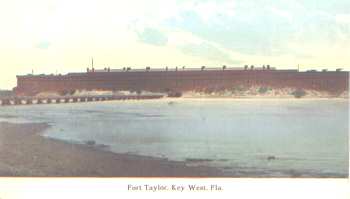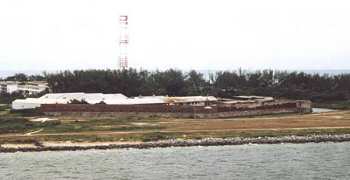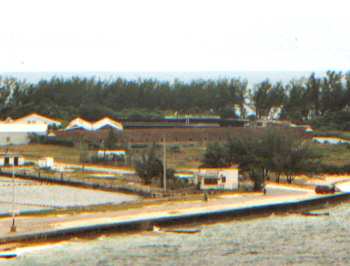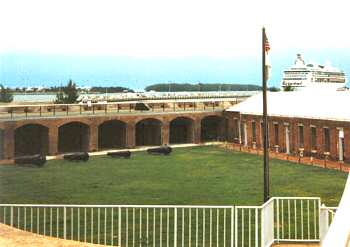|
"Named after U.S. President Zachary
Taylor, this fort was the island�s principal defense in the Civil War, and
administrative headquarters to the Federal Navy�s East Gulf Coast
Blockading Squadron, making it arguably the most important fort in Florida
during the Civil War. Originally located one thousand feet offshore on a
63 acre shoal, the construction of the three story, trapezoid shaped fort
began in the mid-1840�s with the intent of its five foot thick walls being
to stop hostile invasions. Military personnel were able to access the fort
via a 1000 foot causeway that connected it to the land. Items such as
sanitary facilities flushed by the tide and a desalination plant which
produced drinking water from the sea were several new innovations
available to its garrison. Like its neighbor in the Dry Tortugas, Fort
Jefferson, it was hampered in its 21 year construction period by constant
shortages of men, material and outbreaks of Yellow Fever. The forts
formidable arsenal however, proved to be ample deterrent to Confederate
attack as the fort was in Union hands throughout the war. During the war,
almost 300 seized Confederate blockade-running ships had been detained in
its harbor and guarded by its 10 inch cannon which had a range of up to
three miles. Modernization efforts occurred in 1898 during the
Spanish-American war resulting in the elimination of the top two stories
to facilitate the installation of newer weapons, including filling the
original casements with sand. In 1947 the US Army turned control of the
fort over to the Navy. Further renovations through the years included
filling in the water around the fort rendering it landlocked, though a
moat was built around the fort in 1989. The net result of these changes is
that this historic site bears little resemblance today to its Civil War
prominence. Beginning in 1968, excavations within the fort uncovered
numerous stockpiles of guns and munitions from the Civil War, some of
which are now on display at the fort. This display represents only a
fraction of the still-buried munitions which gives Fort Taylor the
distinction of having the largest collection of Civil War armament in the
U.S. Fort Taylor was placed on the National Register of Historic Places in
1971 and in 1973 was designated a National Historic Landmark. The
aforementioned historical changes in topography coupled with erosion over
the decades have now rendered the fort surrounded by land, which has
allowed for the creation of a manmade beach for swimming and snorkeling.
There is also a picnic area and concession site."
Paul Taylor's book, Discovering the Civil War in Florida: A Reader
and Guide, is available from Pineapple Press at
www.pineapplepress.com,
or, signed copies are available direct from the
author. Contact Paul at
|



